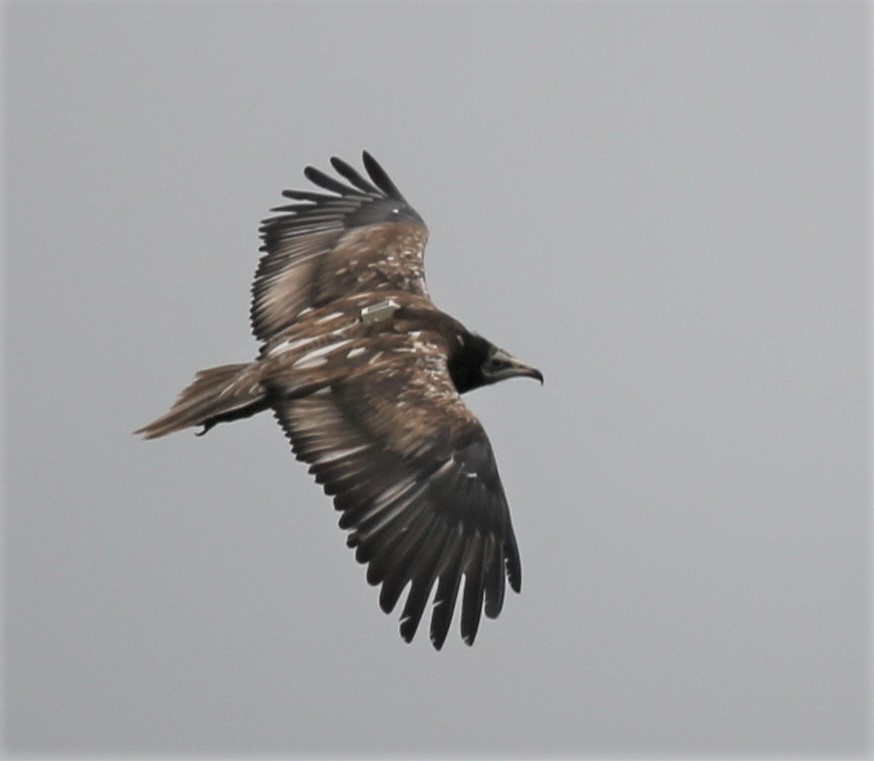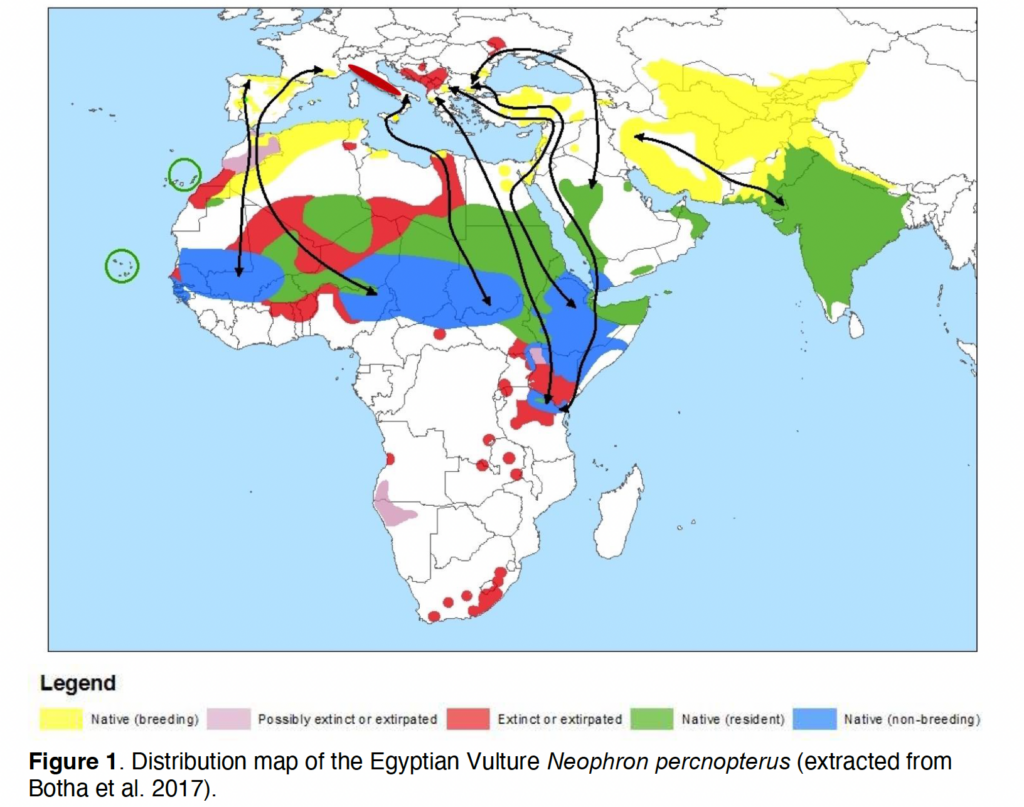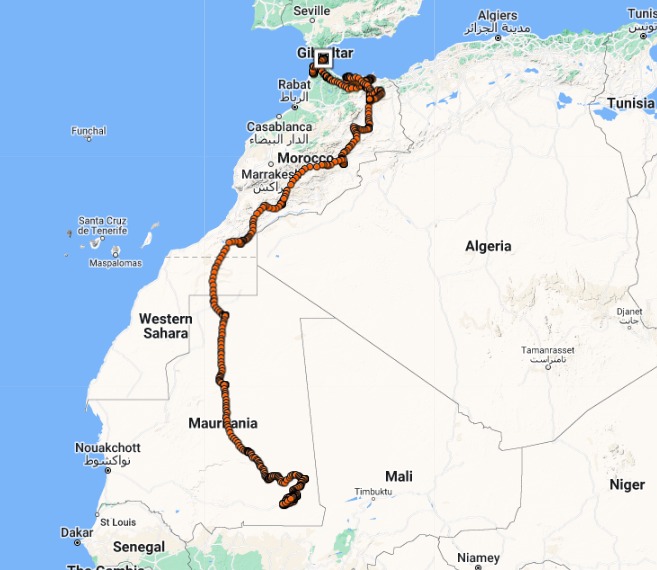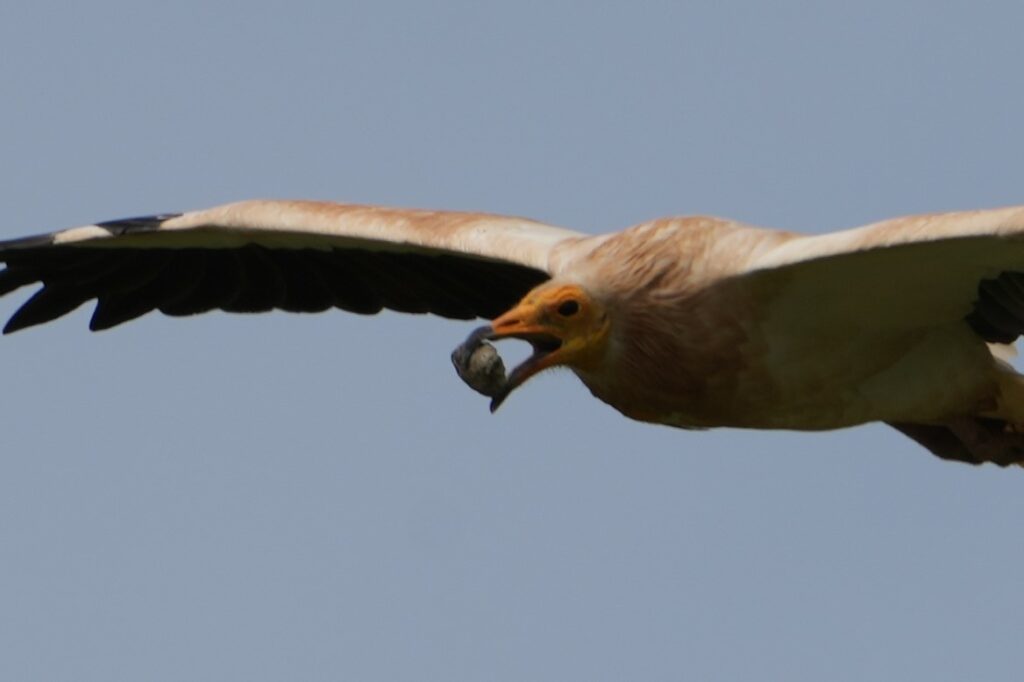Egyptian Vultures (Nephron percnopterus) have fascinating migration patterns. The population that breeds In Europe undertakes long-distance journeys to Sub-Saharan countries, where they spend winter. Sometimes, however, some juveniles are left behind and are found in a weak health condition, needing rehabilitation. That is precisely what happened to Mogadouro, a juvenile of the year 2021 that was found in Northeastern Portugal and rehabilitated. After spending 2022 in Africa, Egyptian Vulture Mogadouro is back in Europe. Where is he now, and where has it been over the last few years?

The Egyptian Vulture is the only globally “Endangered” vulture species
The Egyptian Vulture is the only vulture in a negative trend in Europe, registering dramatic population declines of 50% in the last 40 years across its breeding range and 80% in the Balkan Peninsula alone. Left with highly fragmented isolated populations, they face threats such as habitat loss, decrease in food supply, poisoning, and collision with electricity infrastructure are the main threats they face. Adding to that, their annual migration flyway poses significant risks.
As soon as temperatures decrease in late summer or early autumn, they embark on an impressive cross-continental route. However, it is estimated that half of the fledged juveniles never reach the sub-Saharan wintering grounds. Organisations all over Europe have been joining efforts to revert the declining trend and secure the future of Egyptian Vultures. One conservation action we at the Vulture Conservation Foundation (VCF) have been supporting is to tag juvenile birds that enter rehabilitation centres. The data received from their GPS transmitters give us important insights into understanding their migratory routes and identifying sensitive areas to implement mitigation measures.

Mogadouro’s journey to Africa
The Egyptian Vulture Mogadouro fledged in the wild in 2021 in an unknown location and was found in September by local ICNF rangers in poor health condition in north-eastern Portugal close to the village of Mogadouro. The bird was taken to CIARA, a rehabilitation centre in the region, where he recovered his health and was ready to be released one month later.
The local team, supported by us at the Vulture Conservation Foundation, tagged the juvenile bird and sent it to Spain to be released in a potential wintering site. We suspected that it was too late in the season for Mogadouro to begin his migratory route to Africa. However, on 6 November, he headed south and crossed the Gibraltar straight. In just a few weeks, he reached Mauritania, where he spent the entire year of 2022, often visiting Mali too.
Egyptian Vulture Mogadouro is back in Europe
Earlier this season, the Egyptian Vultures Arribas (fledged in 2019) and Fangueiro (fledged in 2020), tagged in Portugal within the LIFE RUPIS project, started moving north. Mogadouro was the last to embark on his journey, probably following other flocks of birds on their annual migratory flyway to Europe. In less than a month, he reached Morocco and hung around in Nador, possibly trying to find the best option to cross the Mediterranean. After some trials along the Moroccan coastline, he finally made it to the Jbel Moussa Protected Area, where our colleagues from AMPOVIS (the Morrocan Association for the Protection of Birds and Wildlife) were able to photograph and film Mogadouro. After discovering the Jbel Moussa protected area, he finally crossed Gibraltar straight and moved to the region near Cáceres, where he has been staying since then. What will he do next?



During their migration, Egyptian vultures rely on strategically located stopover sites to rest and replenish their energy reserves. These sites along the Mediterranean coast provide essential food sources such as carrion and insects. The Egyptian Vulture is a very intelligent species, mastering the use of tools such as small stones to crack open eggs or snail shells.


Will Mogadouro return to the Iberian Peninsula next spring?
Egyptian Vultures typically take between 4 to six years to reach sexual maturity. Food availability and environmental conditions play a role in speeding up or delaying this process. Once paired, Egyptian Vultures engage in a monogamous relationship, and both share responsibilities for raising their offspring. For this season, Mogadouro is still too young to pair with a female. Hopefully, he will manage to arrive earlier on the Iberian Peninsula next spring and, maybe, in good company!
Know more about current efforts in Italy to consolidate the small Egyptian Vulture population with the LIFE Egyptian Vulture project and visit our dedicated page to follow the movements of many Egyptian Vultures tagged.



